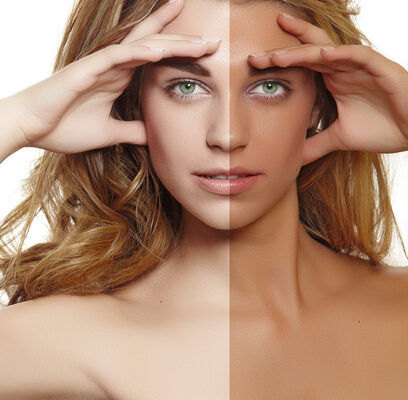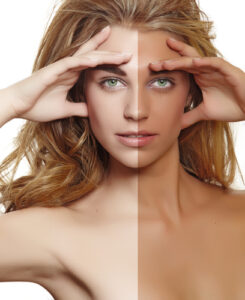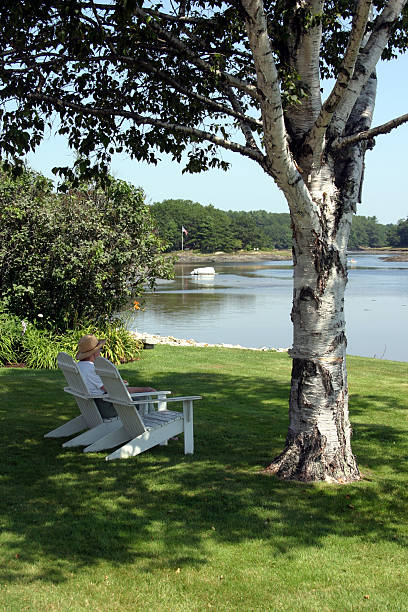
To Tan or Not to Tan: The Sun-Kissed Dilemma
Introduction; In a world where beauty standards seem to evolve with each passing season, the debate on tanning continues to divide opinions. Some people embrace the sun-kissed glow as a symbol of health, vitality, and beauty, while others raise concerns about the potential dangers of excessive sun exposure. As we delve into the pros and cons of tanning, it becomes apparent that the decision to tan or not to tan is far from black and white.
The Appeal of a Golden Tan
For centuries, tanned skin has been admired and sought after in various cultures worldwide. The association of tanned skin with outdoor activities, leisure, and a well-traveled lifestyle has made it an appealing feature for many. Moreover, a tan can help even out the skin tone, camouflaging imperfections and making individuals feel more confident in their appearance.
Beyond aesthetics, some argue that tanning is essential for acquiring much-needed vitamin D. Sunlight is a natural source of vitamin D, which is crucial for maintaining strong bones, a healthy immune system, and overall well-being. However, the debate about whether the sun provides adequate vitamin D while balancing the risk of skin damage is a complex one.
The Dangers of Excessive Sun Exposure
While basking under the sun may feel enjoyable, it comes with potential hazards that should not be overlooked. The primary concern is the harmful ultraviolet (UV) radiation emitted by the sun. Prolonged and unprotected exposure to UV rays can lead to sunburns, premature ageing, and increase the risk of developing skin cancers, including melanoma, the deadliest form of skin cancer.
It’s essential to recognise that the risk of skin damage and cancer is not solely related to sunbathing on a beach. Regular exposure to UV radiation, even during routine outdoor activities, can cumulatively contribute to long-term health issues. Additionally, tanning beds and artificial tanning methods also expose the skin to harmful UV radiation, heightening the risk of skin problems.
The use of an MSH like Melanotan 2 can help minimise the UV session times to a minimum whilst still achieving a fantastic natural tan.
Safe Tanning Practices
For those determined to attain a sun-kissed look, there are safer ways to achieve it without exposing oneself to excessive UV radiation. Sunscreen is a crucial tool in protecting the skin from harmful rays while allowing a gradual tan to develop. It’s essential to use a broad-spectrum sunscreen with a high SPF and reapply it regularly, especially after swimming or sweating.
Moreover, seeking shade during peak sun hours (usually between 10 a.m. and 4 p.m.) can significantly reduce UV exposure. Wearing protective clothing, such as hats, long-sleeved shirts, and sunglasses, also helps shield the skin from the sun’s rays.
Other products help minimise the time you need to achieve a fantastic tan like TruTan and their range of Melanotan products namely tanning injections, Nasal spray
The Rise of Sunless Tanning
As awareness of the dangers of UV exposure grows, so does the popularity of sunless tanning alternatives. Sunless tanning products, including lotions, sprays, and mousses, offer a safer option for achieving a tan without the need for sun exposure. These products contain dihydroxyacetone (DHA), a chemical that reacts with the skin’s surface to produce a temporary tan appearance.
While sunless tanning is a safer alternative, it’s essential to choose reputable products and follow the instructions carefully to avoid an unnatural or streaky tan.
Conclusion
The decision to tan or not to tan ultimately lies in individual preferences and values. While a sun-kissed complexion is desired by many, it’s essential to weigh the risks and benefits before spending prolonged periods in the sun or opting for artificial tanning methods.
Remember, sun safety should always be a top priority. Embracing a healthy lifestyle that includes outdoor activities in moderation, along with protective measures like sunscreen and proper clothing, can help strike a balance between enjoying the sun and safeguarding your skin from potential harm.
So, whether you choose to bask in the sun’s warmth or embrace the sunless tanning options available, the key is to do so responsibly and mindfully, ensuring that your skin stays healthy and radiant for years to come.







This Post Has 0 Comments